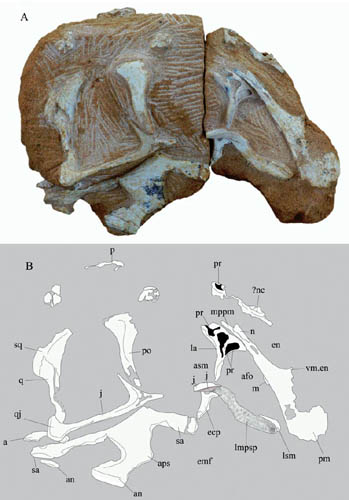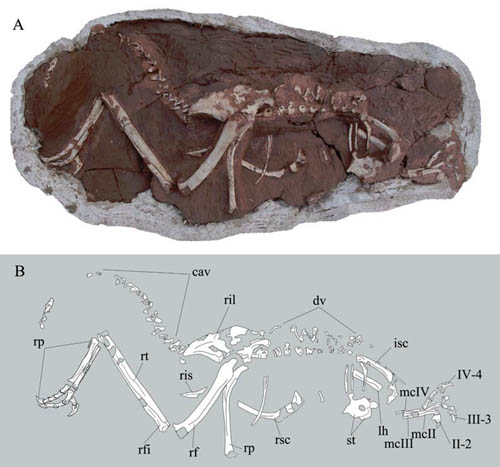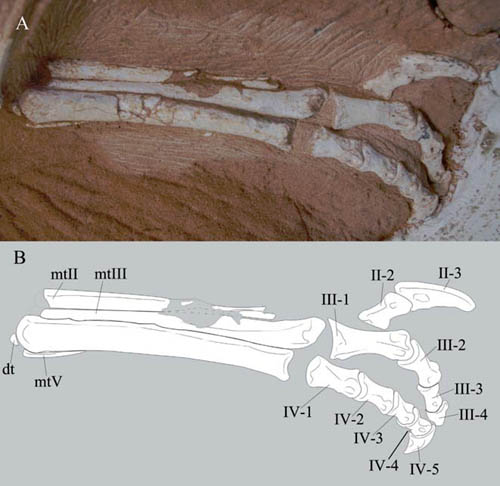A New Oviraptorid Dinosaur:Wulatelong gobiensis
In a paper published in the journal of Vertebrata PalAsiatica 51(2), the team reported a new oviraptorid, Wulatelong gobiensis gen. et sp. nov., based on a nearly complete skeleton collected from the Upper Cretaceous Wulansuhai Formation of Bayan Mandahu during the 2009 field season. This specimen represents the third oviraptorid species known from the Bayan Mandahu area, providing new data for better understanding the Late Cretaceous dinosaur faunas of the Gobi area.
Wulatelong gobiensis is probably an adult individual as indicated by the complete closure of the neurocentral sutures of all exposed dorsal vertebrae. With a femoral length of about 255 mm, the specimen is a small oviraptorid, though it is still considerably larger than most basal oviraptorosaurs. Researchers estimated the body mass of Wulatelong gobiensis to be about 29 kg based on an empirical equation developed using measurements from complete non-avian theropod skeletons and body mass estimates based on water displacement experiments with reconstructed models. 
Fig.1 Photograph (A) and line-drawing (B) of skull and mandible of holotype specimen of Wulatelong gobiensis gen. et sp. nov. (IVPP V 18409) in right lateral view. (Image by XU Xing)
Fig.2 Photograph (A) and line-drawing (B) of postcranial skeleton of holotype specimen of Wulatelong gobiensis gen. et sp. nov. (IVPP V 18409) (Image by XU Xing)
Fig.3 Photograph (A) and line-drawing (B) of right pes of holotype specimen of Wulatelong gobiensis gen. et sp. nov. (IVPP V 18409) (Image by XU Xing)
Download attachments: